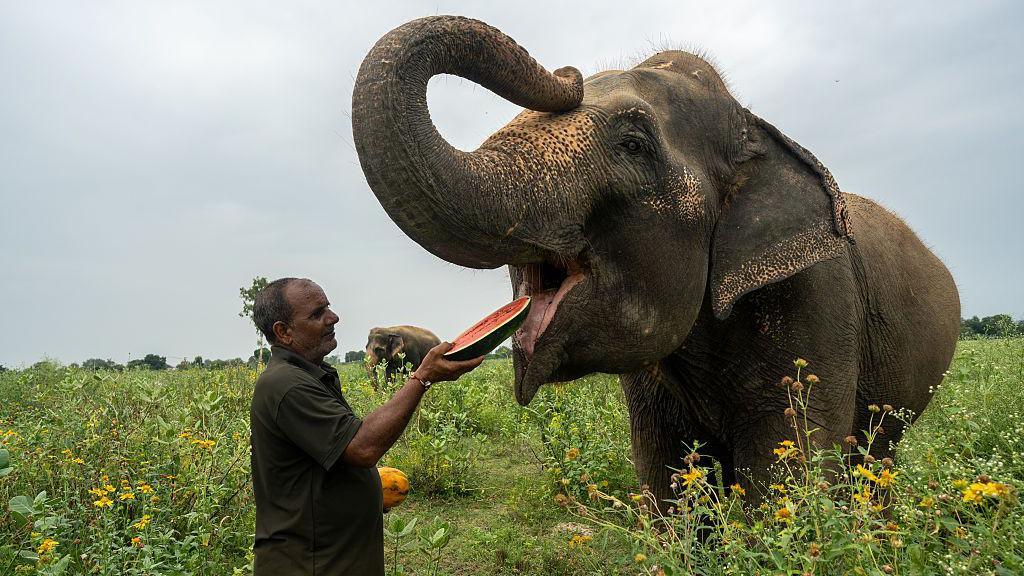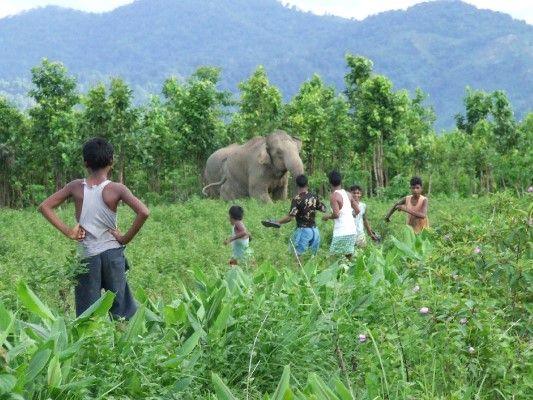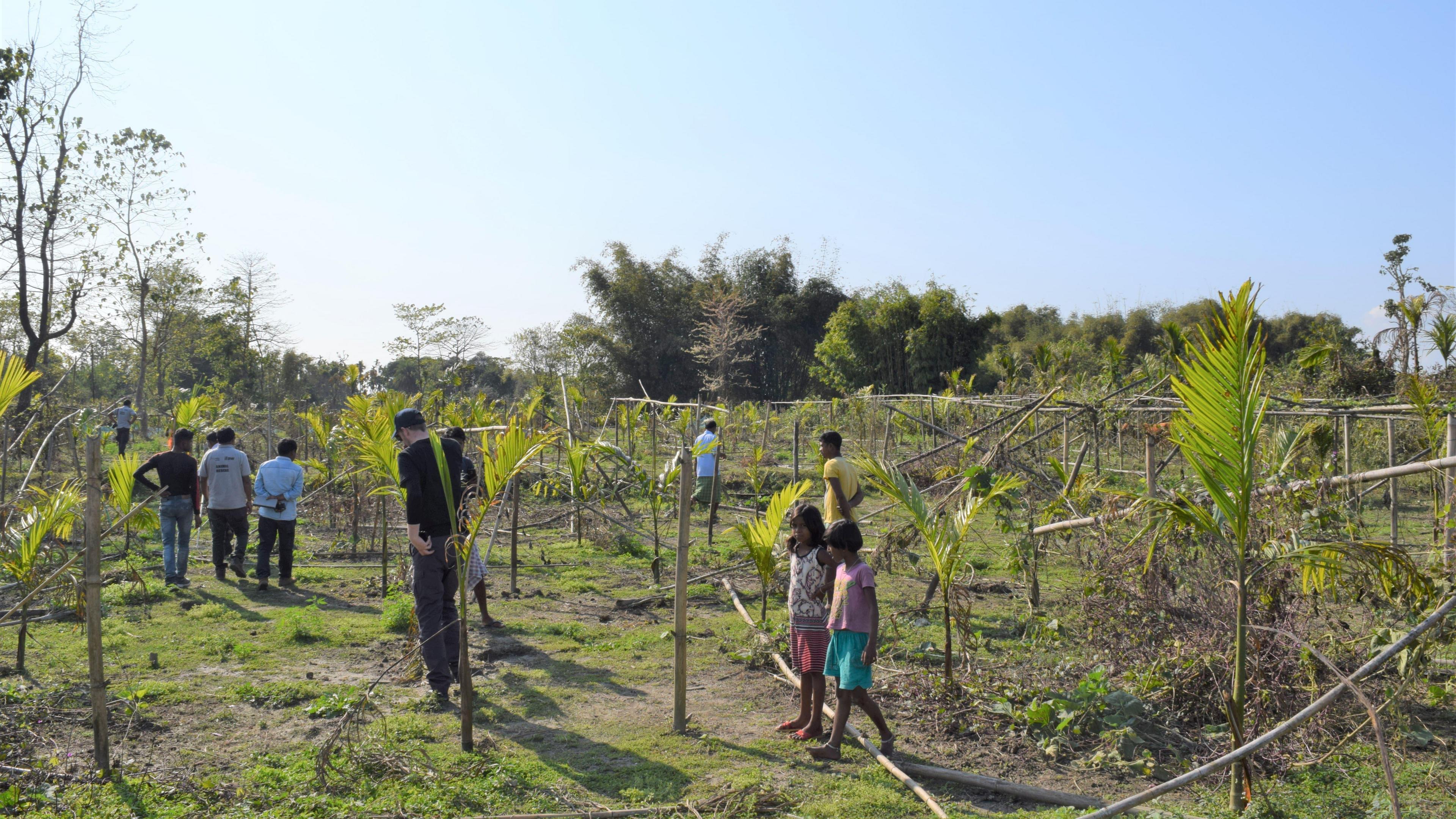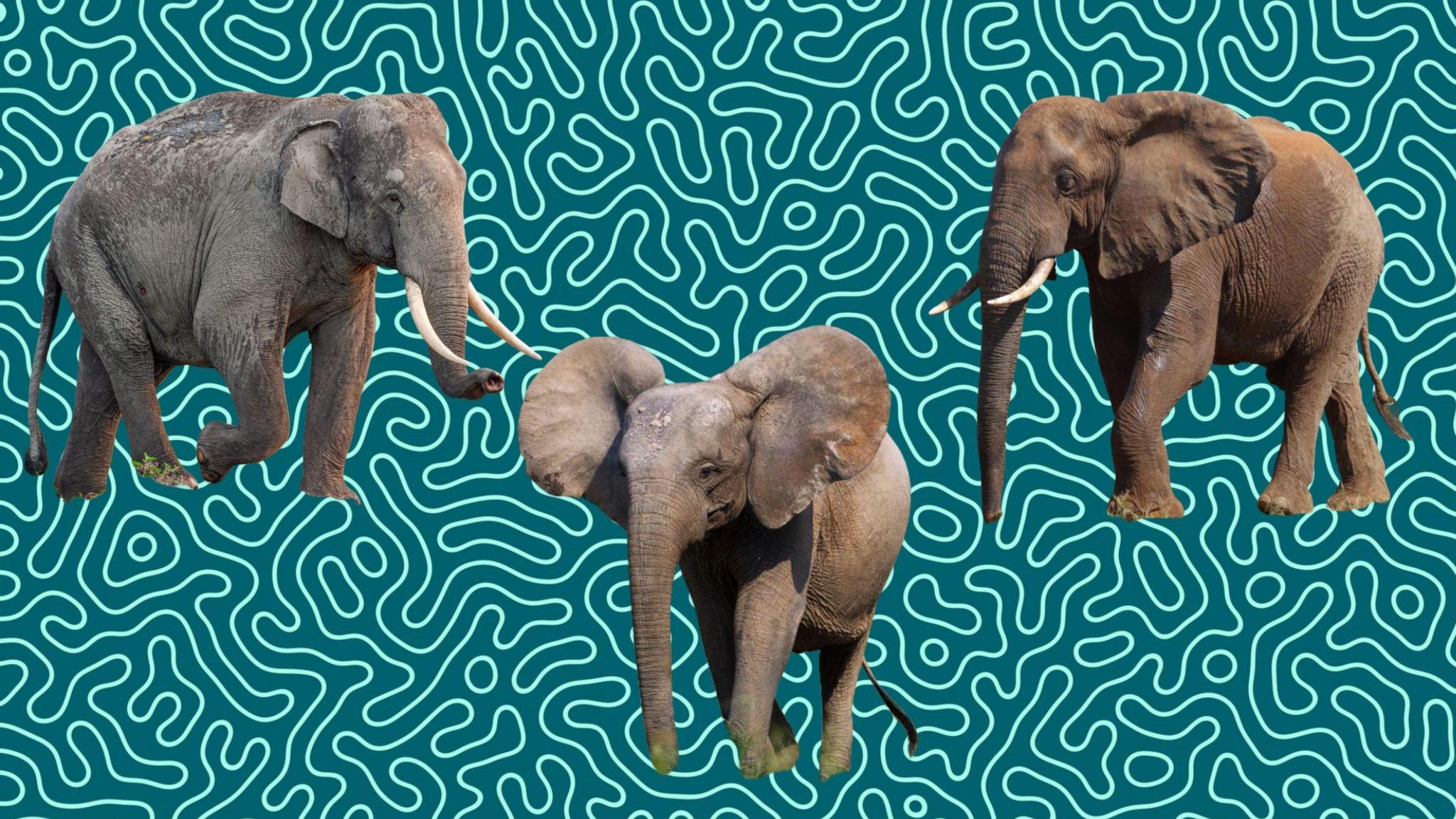How a new map could protect both humans and elephants

- Published
Researchers have created a new map that they hope will help to protect both humans and elephants.
Currently in India, the growth of areas where humans live, into areas that are also where wildlife live, can cause conflict between the two, which can also lead to injuries and even deaths.
So, scientists from the UK and India have created an interactive map that shows where previous incidents have taken place.
They will then use this information to try and prevent the conflicts from happening.
World Elephant Day 2025: Amazing facts about elephants
- Published12 August
Elephants call to each other by name
- Published11 June 2024
Conservation efforts helped 150 rare species recover, say Natural England
- Published13 August
Why are there human-elephant conflicts?

Sometimes elephants and people can meet unexpectedly, which can lead to trouble
Human-elephant conflicts normally happen because both species are competing for space and also for food.
One of the scientists who helped create the map, Jacqui Morrison, says elephant habitats have "shrunk to seven per cent of their historic range".
So this can lead to clashes.
For example, farmers use land to grow crops, so they can sell the food and make money, but when elephants see a field of crops, they see a "highly nutritious source of food".
So if an elephant eats it all, Jacqui says it can threaten "livelihoods and welfare".

Jacqui Morrison from Chester Zoo is one of the scientists who worked on the map
The map that scientists have developed brings together information about where elephants have raided farmers crops before, and the local attitudes towards the animals.
It will then use this to predict where incidents might happen and try to prevent them.

This pumpkin patch in Assam, India was damaged by elephants
Asian elephants are an endangered species according to the IUCN Red List, so ensuring they are safe is very important.
And it might not just help elephants in India!
Whilst the map right now is being used in Kerala in South India, the researchers hope that it might eventually be used in other areas and for other species too!
How well do you know elephants?

Asian Elephant (left), African Forest Elephant (middle), African Savanna Elephant (right)
There are three types of elephant in the world: African Savanna, African Forest and Asian.
What are the differences?
Ears! Asian elephants' ears are much smaller than the large, fan-shaped ears of both African species.
Tusks! Both male and female African elephants can grow tusks, but it's only the male Asian elephants that might grow the long pointed tooth.
Heads! Asian elephants have what's called a twin-dome head, whilst the head shape of the African species is round.
Want to test your elephant knowledge? Take our elephant quiz, external.
